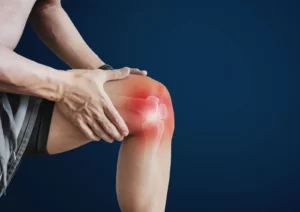Playing sports can bring us a lot of joy, but it’s important to remember that injuries are also part of the game whether a professional athlete or an amateur is playing for fun, preventing sports injuries should be your top priority.
This article will discuss some practical ways to prevent sports injuries. By the end of this blog, you will be more knowledgeable and equipped to handle any physical activity safely and successfully.
What sport has the most injuries?
According to various studies and reports, American football has the highest rate of injuries among all sports. It is a physically demanding sport that involves a lot of contact and collision, which can lead to a wide range of injuries, including:
- head and brain injuries
- broken bones
- sprains
- strains
Other sports with high rates of injury include soccer, basketball, and ice hockey.
American football is known for its high rate of injuries, particularly head and brain injuries. The nature of the sport, which involves a lot of physical contact and collision, puts players at risk for injury. Studies have found that the risk of injury is higher for high school and college players compared to professional players, likely due to the greater size and strength of professional players.
One study by the National Center for Catastrophic Sports Injury Research found that between 1982 and 2019, there were 260 deaths in high school and college football players due to injuries sustained on the field. Another study published in the Journal of Athletic Training found that the incidence of injuries among college football players is as high as 8.1 injuries per 1,000 exposures (a measure of game or practice participation).
The study also found that the most common injuries among college football players are sprains and strains, followed by contusions and lacerations.
Why do sports injuries occur?
Sports injuries occur due to a variety of reasons, including overuse, improper technique, lack of conditioning, inadequate warm-up or cool-down, and direct impact or collision.
In some cases, pre-existing medical conditions or structural abnormalities can also contribute to the likelihood of injury. Additionally, improper equipment or a lack of protective gear can increase the risk of injury.
Several different types of sports injuries can occur, including:
- Acute injuries: These are injuries that happen suddenly, such as a sprained ankle or broken bone. They are typically caused by a single traumatic event, such as a fall or collision.
- Overuse injuries: These injuries result from repetitive motions or excessive stress on a specific part of the body. Examples include tendinitis, stress fractures, and bursitis.
- Soft tissue injuries: These injuries affect muscles, tendons, and ligaments. Examples include strains, sprains, and contusions.
- Traumatic brain injuries: These injuries can occur due to a blow to the head or a collision. Symptoms can include headaches, dizziness, and difficulty with coordination and balance.
Preventing sports injuries is possible by following good training practices such as proper warm-up, calm down, and stretching, maintaining a good fitness level, using the appropriate equipment and protective gear, and seeking the guidance of a coach or trainer. Additionally, regular physical check-ups and addressing any underlying medical conditions can also help to reduce the risk of injury.
Causes of sports injuries
Sports injuries can be caused by a variety of factors, including:
Overuse
Repeatedly performing the same movement or activity can cause small tears in the muscle or tendons, leading to inflammation and pain. This is common in sports that involve repetitive motions, such as running, swimming, and throwing.
Improper training techniques
Poor form or technique can put unnecessary stress on certain body parts, leading to injury. For example, improper form in weightlifting can lead to back or shoulder injuries.
Inadequate warm-up or cool-down
Not properly preparing the body for physical activity can increase the risk of injury. A proper warm-up increases blood flow and raises muscle temperature, while a cool-down helps reduce muscle soreness.
Poor conditioning
Athletes who are not in good physical condition are more likely to get injured. A lack of cardiovascular fitness can lead to fatigue, which can affect form and increase the risk of injury.
Lack of flexibility or strength
Tight or weak muscles can make the body more susceptible to injury. Athletes should incorporate stretching and strength training into their routines to maintain flexibility and prevent injuries.
Improper equipment
Wearing equipment that does not fit properly or is in poor condition can increase the risk of injury. For example, wearing worn-out running shoes can lead to knee and ankle injuries.
Trauma or Impact
Collisions with other players or objects during a game or practice can result in injuries, such as fractures, dislocations, sprains and strains.
Pre-existing health conditions
Some pre-existing health conditions, such as osteoarthritis, can increase the risk of sports injuries. It’s essential for athletes to inform their coach or trainer of any pre-existing conditions and to consult with a doctor before participating in any sport or physical activity.
It’s also important to note that many sports injuries can be prevented by following proper training techniques, warming up and cooling down properly, and using appropriate equipment.
How to prevent injuries in sports
Sports injuries are a common occurrence, but they can be prevented.
Following these tips can help reduce the risk of sports injuries:
Warm Up
When doing warm-ups, our muscles are ready for more intensive exercise and are less likely to be strained or torn. Warm-ups should consist of dynamic stretching, light jogging, and other activities that increase blood flow to the muscles.
Stretch
Stretching also helps to reduce the risk of injury by loosening tense muscles and increasing flexibility. Stretching should be done before and after exercise for the best results.
Maintain Flexibility
Flexibility is a crucial component of injury prevention. Therefore, athletes should perform stretches that target the entire body, such as dynamic stretching and yoga poses.
Use Appropriate Equipment
Using the correct equipment is essential for injury prevention in sports. For example, wearing appropriate footwear can help to protect against foot and ankle injuries, while protective gear can help reduce the risk of traumatic injuries.
Rest and Recovery
Rest is an essential part of injury prevention in sports. Athletes should avoid overtraining and allow their bodies time to rest and recover from intense physical activity. Functionality comes from the body’s ability to sustain a healthy activity over time.
Follow Proper Form and Technique
Following proper form and technique when playing sports is essential to reduce the risk of injury. Poor form can increase stress on specific body parts and lead to muscle strains or tears. It is also essential to follow safety protocols when participating in sports.
Listen to Your Body
It is important to be aware of the signals your body sends when it needs rest or recovery. Ignoring these signs can lead to injury or even further damage. Athletes should be mindful of their bodies and listen to any warning signs that something may not be right.
Strengthen Your Core
Strengthening the core muscles can help to improve balance and reduce the risk of injury. Incorporating core exercises into your routine can also help to increase stability and prevent falls.
Ensure Proper Healing from Previous Injury
It is important to allow enough time to heal from any previous injury before returning to activity. Too much exercise too soon can cause further damage and lead to a longer recovery. Follow your doctor’s instructions for any healing process, and always consult a healthcare professional before participating in sports or physical activities.
Play Safe
Sports can get competitive, but it is essential to remember that safety should always come first. Never take unnecessary risks when playing sports, and always follow the game’s rules.
Watch Out for Others
Lastly, always be aware of other players on the field. Keep an eye out for any unsafe behavior that could lead to injury.
By following these tips, athletes can reduce their risk of sports injuries and enjoy a safe and enjoyable experience. Remember: safety is always the top priority!
Factors That Increase Your Risk of Sports Injuries
The risk of getting injured while playing sports can be increased by certain factors.
These include:
- Lack of knowledge about proper techniques and safety practices
- Poor physical fitness level
- Not allowing enough time to warm up and cool down
- Playing with inadequate or inappropriate equipment
- Excessive fatigue due to overexertion or overtraining
- Poor nutrition
- Playing in unsafe conditions
- Not listening to your body’s warning signs of overexertion
- Ignoring any pain associated with an activity
- Improperly healed injuries from the past
By being aware of and addressing these risk factors, athletes can reduce their chances of getting injured while playing sports; moreover, treating sports injuries with podiatry offers specialized strategies for injury prevention.
Sports-Related Emotional Stress
Emotional stress is rampant and can lead to burnout, depression, and other mental health issues. It is essential to manage stress effectively when participating in sports by setting realistic goals, taking breaks, talking to a coach or counselor if needed, and recognizing signs of burnout.
Have Yourself Checked First Before Doing Sports
Sports injuries can be severe and significantly impact an athlete’s ability to perform and enjoy their favorite activities. Therefore, it is essential to reduce the risk of injury by following safety protocols, correctly using protective gear, following proper form, allowing adequate rest and recovery, and checking with a healthcare professional before engaging in any physical activities.
Safety should always be a top priority for athletes when participating in sports. By taking the necessary steps to reduce the risk of injury, athletes can enjoy their favorite activities and stay safe simultaneously!
At One Step Diagnostic, we offer Texas imaging and pain management services. From ultrasound and CT scanning to X-rays, we provide comprehensive imaging services. Our expert pain management doctors specialize in helping patients manage their chronic pain conditions. Visit our website to learn more about our services or call us today to set up an appointment!
We are dedicated to ensuring the safety of all athletes and helping them reduce their risk.




